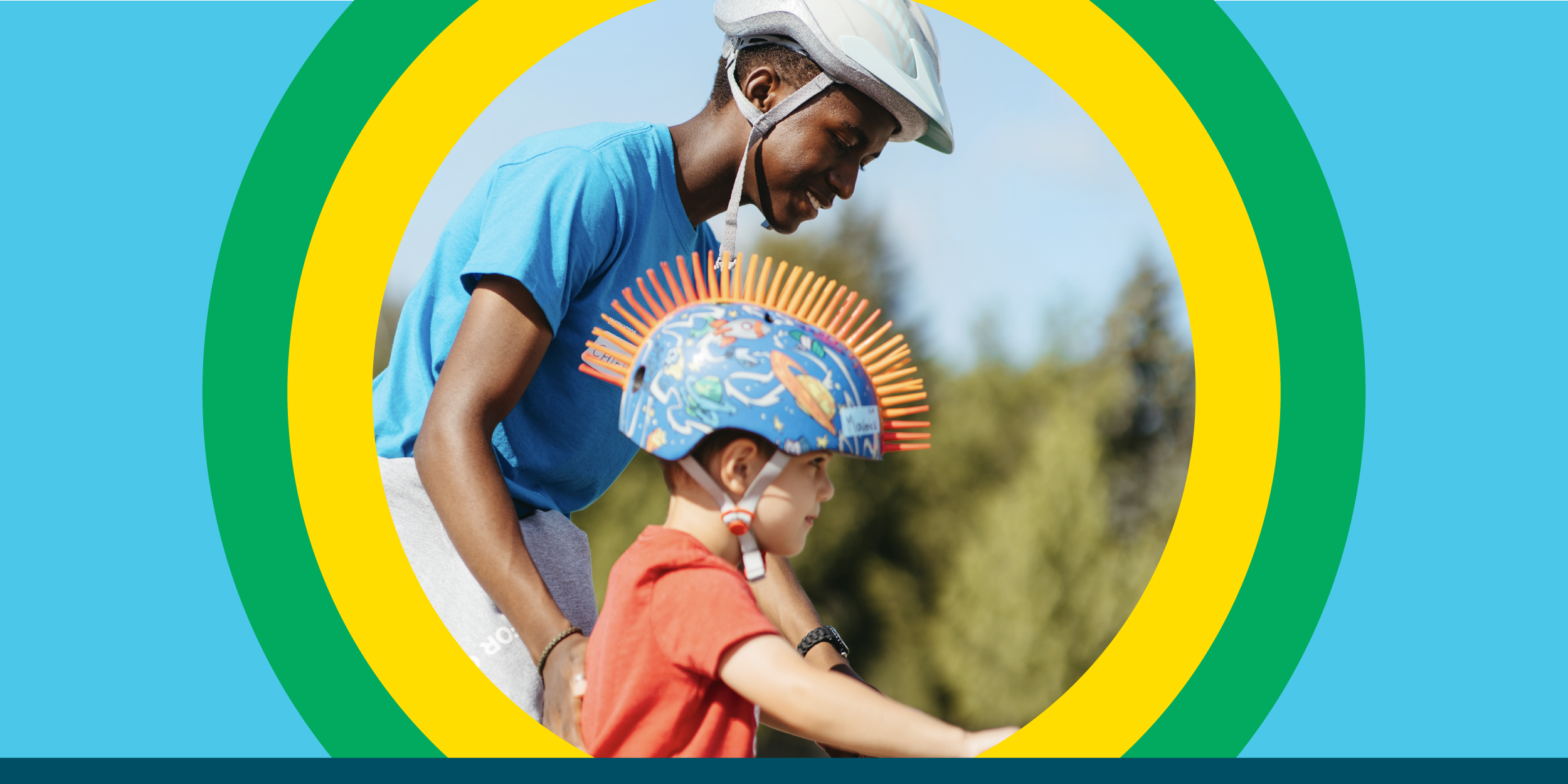Learning how to ride a bike is a childhood milestone. It’s the life skill that gives your child a set of tire-shaped wings to allow them to experience their first independent adventure, and perhaps, grow into a lifelong cyclist.
But taking your kid from training wheels to two wheels can be hard. It often goes hand-in-hand with unbeatable tantrums, a sea of tears, and a bike thrown sideways on the pavement.
In fact, this was how Pedalheads Bike was born:
“Parents asked us for help to get their kids riding safely and confidently on their own.”
- Claudia Sjoberg, Founder & CEO, Pedalheads
This article covers what you need to know to teach your kid how to ride.
- What age should my child learn to ride?
- What bike size is right for my child?
- How to properly fit a bike helmet?
- Where should my child learn to ride?
- Where to find bike lessons for kids?
First, here are some general tips:
Create a safe setting by choosing a quiet area, adjusting their seat low enough so their feet as flat on the ground, and correctly fitting their helmet.
Have patience with fear and understand that your kid may feel scared or nervous about letting go of the training wheels.
Allow them to learn at their own pace and recognize that every child is different.
Offer reassurance and be enthusiastic with your encouragement to foster their confidence.
Provide hands-on support until you notice the shift in effort as they gain confidence and are ready to ride without assistance.
Celebrate their “I did it!” moments with high fives and happy dancing. Riding a bike independently is a big deal that you and your kid will be so proud of!
What age should my kid learn to ride?
With the creation of new learning equipment, kids are making progress to two wheels earlier than ever. Many children start using a balance bike—a bike without pedals—between 18 months to 2 years to help develop their balance and coordination skills. Balance bikes allow kids to stabilize themselves with their feet on the ground before progressing to a bike with pedals.
Generally, the ideal age for a kid to learn to ride a regular bike is between 4 to 6 years old. At Pedalheads, our signature learn-to-ride level is geared towards kids aged 4+ where they learn how to pedal, steer, stop, and, if they are ready, balance on two wheels.
“Kids at this age tend to have a fearlessness that can be fostered into competence and confidence.”
So, while it’s never too late to learn, it’s typically easier to pick up cycling skills at a younger age.

Caption: One of Pedalheads’ littlest campers gliding on their balance bike
What size bike is right for my kid?
Bike riding is one of the few instances where an oversized hand-me-down just won’t do. Creating competent cyclists starts with choosing the right equipment. And for biking, this means choosing the right size bike frame.
Children’s bikes are sized according to the diameter of the wheel in addition to how your kid looks and feels when they are sitting on the bike. Keep in mind that when buying a bike for beginners, their feet should rest flat on the ground when seated, and their arms should maintain a slight bend in the elbows. See our helpful bike size chart that gives you an approximate idea of what size bike will fit your child.

How to fit a kid’s bike helmet
Aim for Goldilocks’ standards when fitting your kid with their bike helmet—not too big, not too small, just right. Wearing a helmet can reduce the risk of serious injury by 70 percent. There are four essential helmet safety rules to give them the tools to embrace life’s adventures head (and helmet)-on.
Stickers
Start by checking for a safety sticker inside. This sticker assures compliance with safety standards set by organizations like CPSC, SNELL, ASTM, or CSA.
Straps
Ensure straps are properly fastened. When the helmet is on, the straps should form a "V" shape around the ears. There should be space for two fingers between the straps and your kid's chin.
Snug
The helmet size affects how it fits around the head. Helmets should fit snugly even when unfastened and head movement shouldn't cause the helmet to slide or fall off easily,
Straight
The helmet should sit straight with no more than a 2-finger gap between the eyebrows and helmet, and should not slide backward, exposing the forehead.

Caption: Pedalheads instructor performing a helmet safety check
Where to learn to ride
New riders learn best on flat, expansive surfaces. Seek out deserted parking lots, sports courts or blacktops at schools that provide ample room for your little one to embrace the wobbles without the fear of navigating tight spaces or obstacles.
Find bike lessons near you
At Pedalheads, we use an advanced curriculum and our own skill development methods, designed to help kids succeed at each stage of their bike riding journey. Above all, we encourage an attitude of safety by prioritizing lessons on road safety in every level.
Forego the temper tantrums and embrace the proud parent moments with a Pedalheads Bike camp. Explore bike programs.

Comments